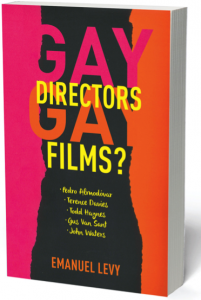Sundance Film Festival, Jan. 23, 1997-Nowhere, the final installment of what can be termed Gregg Araki’s “Teen Apocalypse” trilogy, which began with Totally F***ed Up and continued with The Doom Generation, is a vibrantly colorful, wildly nihilistic and lovingly perverse poem to America’s beautiful, libidinous and doomed youth.
Though far from being his best, Araki’s sixth feature is more sensual and more superficially entertaining than previous movies
Style and contents are inseparable in the music-video-like Nowhere, yet another Araki exploration of alienation among American’s young generation. Thematically, film has nothing new to offer, but visually, it’s Araki most audacious and accomplished film to date. Demonstrating helmer’s continuous fascination with surrealist cinema, Nowhere follows the logic of TV’s “Beverly Hills 90201,” fast forwarded, hallucinatory–and on acid.
Set in L.A., over the course of one zany but presumably typical day, the deliberately fractured narrative surveys the emotional and sexual turmoil experienced by a multi-racial, pan-sexual group of adolescents. Situating his yarn in the John Hughes’ turf of teen-angst films like Sixteen Candles and The Breakfast Club, Araki ups the ante and presents highly hormonal teenagers as they hurtle through pubescent doubt and insecurity, eternal quest for true love, and the highs and lows of sexual discovery.
Having starred in Totally F***ed Up and The Doom Generation, actor James Duval is the center of Araki’s “Teen Apocalypse” trilogy. Here Duval plays “Everyteen” Dark Smith, an alienated youngster obsessed with “the End of the World” and finding his one true love before it’s too late. His object of affection, Mel (Rachel True), loves him, but she can’t commit to any one person–or gender: Bisexual, she divides her attention between him and her acid-tongued g.f. Lucifer (Kathleen Robertson). Not wasting time, Dark becomes enthralled with an angelic-looking boy, Montgomery (Nathan Bexton).
At the Hole, the local coffeeshop hangout, Dark commiserates with his gay buddy, Cowboy (Guillermo Diaz), only to realize that the latter has a menu of problems of his own. Cowboy’s b.f. and bandmate Bart (Jeremy Jordan) is on a self-destructive downward spiral that threatens their romantic and musical partnership. Drug dealer Handjob (Alan Boyce) exposes Bart to a dangerous duo of dominaitrix, Kriss (Chiara Mastroianni) and Kozy (Debi Mazar). Also convening at the Hole are Dingbat (Christina Applegate), the group’s “brain,” and Alyssa (Jordan Ladd), a poetess who warns the clique of the impending Armageddon, which no one believes until an alien appears in the locker room and some teens mysteriously vanish.
Araki conveys vividly the extreme highs and lows of teen life, the peculiar notions of this age group that everything is life or deaths, that every experience is hyper-accentuated. The film’s tone shifts most pronouncedly from comedy to drama, from rapturous exultation to melancholy and despair. Yet for all its careening action and ricochet mood changes, Nowhere never loses sight of its emotionally aching characters and central issue: alienation.
At heart, Araki was always a surrealist and now that he has the financial backing–and technical skills to match–he lets his imagination run wild. Yarn unfolds as a zany day spent in Disneyland, only instead of conventional attractions and rides, the film’s universe is totally anarchic, perverse–and in flux: There are no rules, no stable identities and no fixed sexual orientations.
As always with Araki’s work, the point of reference is mainstream culture as defined by TV shows like “Beverly Hills 90210” and “Melrose Place,” from which a number of actors have been cast. Other familiar faces, embedded in the collective consciousness, are used as cast-against-type cameos to reinforce the movie’s irreverent and subversive quality. Hence TV’s “Three’s Company” John Ritter plays Moses Helper, a preachy televangelist who seems to be always on the air.
Confidently steeped in contempo visual and aural codes, Nowhere is Araki’s tribute to the weird, ever-changing American pop culture, perceived by him as a living, breathing thing. Pic’s colorful milieu is informed by such disparate elements as Annie Leibovitz’s famous photos of John Lennon and Yoko Ono and the violent fury of a comic strips. Occasionally, Araki falls victim to his unbridled visual instincts, as in an unnecessarily violent scene in which a youngster is killed with a can of tomatoes, with the contained liquid merging with human blood.
It’s impossible to single out individual performances out of a huge ensemble composed of two dozen speaking parts. Suffice is to say that the cast represents some of the most attractive and sexy young thesps in American TV and movies today.
Nowhere is the kind of expressionistic movie that Araki had to make, though now that it’s out of his system, perhaps he can move on to newer subjects–and more resonant films.











